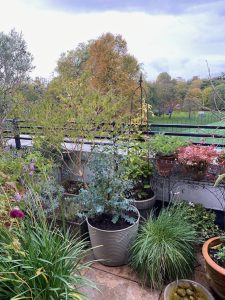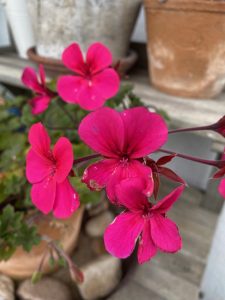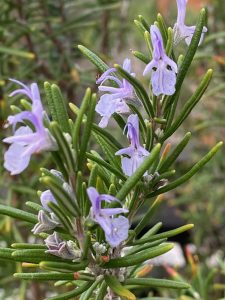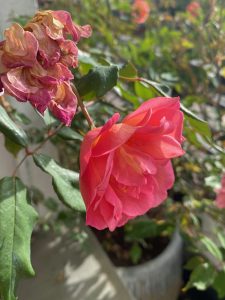In the late sixties I went to see a newly released feature film – Stanley Kubrick’s epic, ‘2001: A Space Odyssey’, but it’s the impact of the sensational opening music I particularly remember. Compositions by Richard Strauss, his namesake Johann Strauss II and György Ligeti, with other classical works, were woven into the film score. From memory it was paired with a ‘B movie’ that I’ve never forgotten, a beautifully filmed, stark commentary on the Middle East, with striking images of a barren landscape, and an even starker message, that wars of the future, in the historic region of Palestine, would be fought over the scarce supplies of water.
The message never left me, but it was many years before the possibility of a lack of clean, secure water transmuted in my mind from the powerful stuff of surreal nightmares to the known catastrophe in the pictures coming from the region today. Against the background of poverty and water equality, and long contested control of water resources in the region (largely from the Mountain Aquifer) today is added the unimaginable horror of rapidly diminishing supplies of clean water and proper sanitation for hundreds of thousands, as the wrenching consequences of the initial offensive play out.
Meanwhile, in many areas, largely in the North and West of the British Isles, the ravages of Storm Babet have caused devastation with loss of life and livelihoods as well as damage to local infrastructure, affecting thousands of people and properties, on a scale that is largely unknown in my edge of city location in South West London, not far from the banks of the Thames, and protected for now by Teddington Lock upstream and the Thames Barrier downstream.
The Naming of Parts
 As I’ve mentioned previously, my balcony is more accurately a small roof garden or terrace from an architectural point of view, since the main planted area is a flat space, above the property below, rather than an elevated platform attached to a vertical wall, which would be (apparently) more correctly called a balcony. Either way, it owes its existence to the redevelopment of a pre-existing Edwardian secondary school which had lost its roof to an incendiary bomb early in the Second World War. The original building had no outdoor space associated with the top floor of the building, although it did have some rather ornate and ambitious stone flourishes, including, rather unexpectedly, a cupola.
As I’ve mentioned previously, my balcony is more accurately a small roof garden or terrace from an architectural point of view, since the main planted area is a flat space, above the property below, rather than an elevated platform attached to a vertical wall, which would be (apparently) more correctly called a balcony. Either way, it owes its existence to the redevelopment of a pre-existing Edwardian secondary school which had lost its roof to an incendiary bomb early in the Second World War. The original building had no outdoor space associated with the top floor of the building, although it did have some rather ornate and ambitious stone flourishes, including, rather unexpectedly, a cupola.
 Today the building’s top floor is much plainer, with an extensive roof of industrial construction, but for those of us living aloft there is enough outdoor space for a miniature garden with all its attendant pleasures and disappointments together with the delicate trade off between time, space and planting conditions and hoped for, but more ambitious creations. Moreover, the smaller plants have the benefit of shelter provided by the red-brick surround together with warmth from the flat below, providing, fortuitously, growing conditions which suit many Mediterranean plants and silvery evergreens.
Today the building’s top floor is much plainer, with an extensive roof of industrial construction, but for those of us living aloft there is enough outdoor space for a miniature garden with all its attendant pleasures and disappointments together with the delicate trade off between time, space and planting conditions and hoped for, but more ambitious creations. Moreover, the smaller plants have the benefit of shelter provided by the red-brick surround together with warmth from the flat below, providing, fortuitously, growing conditions which suit many Mediterranean plants and silvery evergreens.
Weather Charts
A few years ago I went with others to see a play called ‘Pressure’ which focused on the complex task of understanding weather patterns, local factors and the likelihood of favourable conditions for the D-Day landings. Pressure charts and differences of opinion between the might of the American weather experts and the Scottish meteorologist, James Stagg, familiar with the variables over the Channel and with very precise knowledge of the complexities of British weather (and with his own domestic pressures and anxieties) were the backdrop to President Eisenhower’s final decision to give the go-ahead to the risky venture, persuaded as he was by James Stagg that there was a narrow window of opportunity.
 Windows of opportunity for watering are my stock in trade on the roof garden as I need to water by hose or watering can all the containers in periods of drought, the containers nearest the building and under the overhang whenever they have missed out on steady rainfall and all the plants also need feeding periodically by hand when I add slightly random amounts of seaweed based plant food to the water. *I avoid watering on windy days and I don’t want to water when rain is due, to avoid unnecessary wastage of time and water. However, in spite of having a range of guides – the BBC weatherman or woman with descriptive meteorological charts, an indoor/outdoor thermometer and rain gauge, access to rain radar patterns etc, none are as accurate as James Stagg. I continue to avoid watering when I think rain is due although it often doesn’t arrive, or water dutifully and find rain is on its way. However, the plants that do well up aloft are very forgiving. I assume that damp loving plants, such as dropmore purple which shouldn’t do well on a high rise balcony but does, find the extremes of overwatering or drying out to their liking, and not so different from their usual marginal positions, and don’t really mind the high winds either.
Windows of opportunity for watering are my stock in trade on the roof garden as I need to water by hose or watering can all the containers in periods of drought, the containers nearest the building and under the overhang whenever they have missed out on steady rainfall and all the plants also need feeding periodically by hand when I add slightly random amounts of seaweed based plant food to the water. *I avoid watering on windy days and I don’t want to water when rain is due, to avoid unnecessary wastage of time and water. However, in spite of having a range of guides – the BBC weatherman or woman with descriptive meteorological charts, an indoor/outdoor thermometer and rain gauge, access to rain radar patterns etc, none are as accurate as James Stagg. I continue to avoid watering when I think rain is due although it often doesn’t arrive, or water dutifully and find rain is on its way. However, the plants that do well up aloft are very forgiving. I assume that damp loving plants, such as dropmore purple which shouldn’t do well on a high rise balcony but does, find the extremes of overwatering or drying out to their liking, and not so different from their usual marginal positions, and don’t really mind the high winds either.
 *I think you can buy small portable reservoirs which are then attached to hoses so you water and feed without the aid of watering cans but in truth I prefer to feed while hand-watering.
*I think you can buy small portable reservoirs which are then attached to hoses so you water and feed without the aid of watering cans but in truth I prefer to feed while hand-watering.
I have also grown my first ridge cucumber on the balcony. On the allotment, in contrast, they arrive in battalions and it isn’t possible to keep up with their rapid growth and the rate of productivity, so inevitably there is wastage as the larger, older cucumbers quickly become bitter. I arranged to pick this single cucumber with our three year old neighbour who is very keen on harvesting and was also looking forward to the not very far off moment when the butternut squashes on the allotment were also ready. I’m a bit more ambivalent, as the squashes store well, unlike the cucumbers, but are also extremely productive and I still have some of last year’s harvest in the deep-freeze waiting to be turned into soup. Fortunately I do not feel inclined to experiment with growing butternut squash up climbing frames on the balcony (as encouraged by one of my cousins) as they would undoubtedly enjoy the higher levels of sunlight and take over. But I did take the precaution of growing a smaller variety this year having been rather defeated by the weight of last year’s crop and the challenge of cleaning, preparing, cooking and reheating numerous squash dishes.
Mellow Fruitfulness
 Once upon a time I lived for a short while in Notting Hill (as a friend put it, at a time before Hugh Grant arrived) and at a time when antique dealers and book shops were more plentiful than today. Notting Hill is in West London and as someone else once said of me and it is almost true, with the exception of many happy years in the West Country, I have lived in many places, all of them in South West London. I’m anticipating that my current rooftop residence is my final roost but I am a bit of a gypsy and wouldn’t completely discount another move as long as outside space was included. I begin to wither a bit if I don’t have the chance to enjoy the alchemy of plant and potting compost at close quarters, and as I learn a lot en route it’s an occupation I’m reluctant to surrender to the vicissitudes of growing older. But container gardening does have its very real downsides, not least because it doesn’t bring any of the satisfactions of planting and planning for future generations. However, there are many compensations and my olive trees have grown so well this Summer that they seem determined to stay put, which is fine as we are too.
Once upon a time I lived for a short while in Notting Hill (as a friend put it, at a time before Hugh Grant arrived) and at a time when antique dealers and book shops were more plentiful than today. Notting Hill is in West London and as someone else once said of me and it is almost true, with the exception of many happy years in the West Country, I have lived in many places, all of them in South West London. I’m anticipating that my current rooftop residence is my final roost but I am a bit of a gypsy and wouldn’t completely discount another move as long as outside space was included. I begin to wither a bit if I don’t have the chance to enjoy the alchemy of plant and potting compost at close quarters, and as I learn a lot en route it’s an occupation I’m reluctant to surrender to the vicissitudes of growing older. But container gardening does have its very real downsides, not least because it doesn’t bring any of the satisfactions of planting and planning for future generations. However, there are many compensations and my olive trees have grown so well this Summer that they seem determined to stay put, which is fine as we are too.
 If anyone is wondering what trees to plant in a container on an exposed, windy, South facing spot I would always recommend olives, which are extremely robust, and have outlived many of the other large shrubs/small trees I’ve tried to grow. They are beautiful too and covered with fruit at this time of year, all of which comes as a surprise to visitors more used to seeing them around the Mediterranean or who have tried growing them in damper parts of the country. On a smaller scale thulbughia come in a range of sizes and leaf forms and will flower till Christmas, so don’t be put off by the slight whiff of onions as you brush past.
If anyone is wondering what trees to plant in a container on an exposed, windy, South facing spot I would always recommend olives, which are extremely robust, and have outlived many of the other large shrubs/small trees I’ve tried to grow. They are beautiful too and covered with fruit at this time of year, all of which comes as a surprise to visitors more used to seeing them around the Mediterranean or who have tried growing them in damper parts of the country. On a smaller scale thulbughia come in a range of sizes and leaf forms and will flower till Christmas, so don’t be put off by the slight whiff of onions as you brush past.
Over time I’ve managed to introduce, on a very modest scale, seasonal interest and permanent planting, but Autumn colour – leaves, fruit or berries, has eluded me. My latest attempt has been to plant euonymus europaeus, the Common Spindle, in a very large container where it has grown happily, added to the green screen round the balcony all Summer and then dropped its leaves without any change of colour or pretty fruit; I blame the wind. Surprisingly it was the leaves of the dropmore purple which have provided the best Autumn colour this year, but rather tucked away out of sight. The flowerspikes had been visible from mid-Summer above the surrounding greenery, which unfortunately rather masked the lovely Autumn leaves, until it in turn withered and wasted away.
Dropmore purple: surprisingly good aloft although the lower stems are a bit uninteresting until the leaves change colour in late Summer, so possibly best in a container with bushier, smaller plants
Lavender: mine have done better than previously thanks to the advice earlier in the year in the comments section, and could look good under dropmore purple next year although the lavender’s preference for drier conditions may be a challenge
More salvias: great in late Summer and still in flower (Amistad is a lovely deep purple but too tall for the scale of planting hereabouts so I favour Salvia viridis “ Blue Monday’) as well as roses and less vigourous clematis
Blue Monday’) as well as roses and less vigourous clematis
Rosemary: my oldest plant is getting very leggy and starting flowering a few weeks ago which I took to be an ominous portent of its demise, but as recently as this week the bees were still visiting although, understandably, not in very large numbers
Erigeron karvinskianus: as many as possible as these pretty daisies self-seed and co-habit happily around
Variegated trailing ivy: which also has beautiful Autumn colour
And to avoid
Nepeta (catnip): which gets too leggy and mildewy early in the Summer and doesn’t actually seem to attract as many pollinators as I want and expect, and we have no visiting cats to enjoy it either
and maybe
Dahlias: I’m not sure. They are lovely plants and come highly recommended by old friends (a great gardener and cherished friend) and younger relative, whose dahlias are magnificent at the end of the Summer. So is his wisteria but I’ve long given up competing on that front. On the balcony dahlias are rather bulky, without being very interesting, for rather too much of the year.
PS Heavy rain continues to add further misery for many in the British Isles, but back in the dry days of Summer, the cucumber plant, in spite of being in a very restricted pot on the balcony, kept us and our neighbours happily supplied with cucumbers for quite a while, so I will certainly try again. And my buddleia, a carefully selected dwarf variety, suitable for containers, which I fell out of love with early on as it was much more aggresive than I hoped it would be (so hacked it back) has now crept back into growth and flower production and is a really lovely late addition to the balcony.
And you might try visiting YouTube if you are interested in the original score for ‘2001: A Space Odyssey’.





